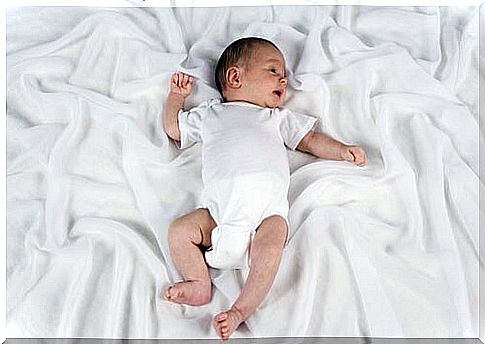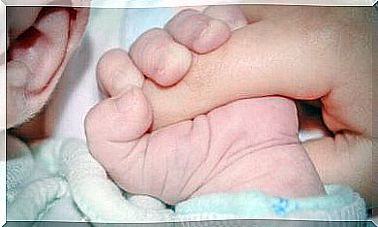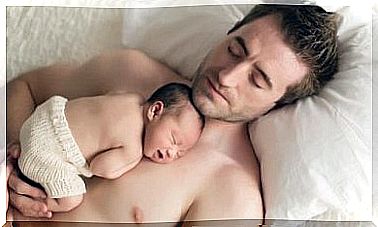The Neck Reflex: The Importance Of Its Presence In The Development Of The Child – Being Parents

One of the first things the pediatrician focuses on when a baby is born is reflexes. How much control the baby has over his body will depend on his ability to adapt to the environment.
These automatic responses are divided into two types. On the one hand, we have the primary reflexes and, on the other hand, the secondary reflexes. So we present to you the neck reflex. The latter is generally among the most important primary involuntary responses of an infant.
The neck reflex: what is it?
The neck reflex, also known as the tonic neck reflex, is seen when the relaxed child turns their head to one side and extends their arm. The baby flexes the other arm at the elbow, as if to defend himself. Or as pediatricians call it, in a fencing position.
It should also be noted that during this reflex, with the arm towards which the child directs the gaze, which is stretched, the hand remains open. In contrast, with the arm bent, the hand is shaped like a clenched fist. This involuntary response is evident on both sides of the child’s body.

Types of neck reflexes
Among the neck reflexes you can find two types:
- The asymmetric reflex. The child turns his head to the side and instantly extends the limb and arm to the same side. Correct development of this reflex stimulates hand-eye coordination in the baby.
- The symmetrical reflex. This type of reflex is a response that integrates as the baby develops. Then, it disappears between the eighth and eleventh month of life. It serves as a precursor to exploration. That is to say, it allows the child to face the challenges of knowing how to control the effects of gravity.
Overview of the neck reflex
The general aspects of this type of automatic response can be summarized as follows:
- It is considered a bridge reflex. That is to say, he is not born with it. But it develops as the child grows.
- This reflex results from the integration of other reflexes. In addition, it is essential for crawling and for visual acuity.
- It greatly increases the muscle tone of the infant. Thus, it promotes eye-hand coordination.
- We see that when we place the child on the knees and hands, he swings back and forth or vice versa.
- It disappears in the sixth month.
The benefits of the neck reflex
One of the most important benefits of developing the neck reflex properly is preparation for sliding and crawling. The other advantages can be summarized as follows:
- Independent members to crawl.
- Improving muscle tone in the back and neck area.
- It stimulates the relationship with gravity, helping it to lift the body on the knees and hands.
- This reflex allows the realization of crossed movements.
- It encourages the development of concentration and vision, as well as its interaction between the two.
- It allows good posture when sitting. This gives freedom to the movements of the head.
Without doubt, an essential reflex which disappears when he begins to walk.

Signs that the neck reflex is still active
The main function of the reflexes, in particular the neck reflex, is to allow the evolution of developmental patterns specific to each age.
Otherwise, if it remains active, it will be a symptom of the immaturity of the nervous system. Indeed, it will affect the development of common functions. The symptoms that show that the neck reflex has remained active are:
- Bad posture when sitting. Usually they lie down on the chair or lie down on the table.
- A child can be diagnosed with hyperactivity syndrome or attention deficit disorder.
- Generalized weakness of the legs and arms.
- Lack of synchronization when crawling.
- Muscle hypotonia, which creates sluggish children with difficulty in vision, concentration and precision.
- Dyslexia or difficulty learning to read and write.
In short, the neck reflexes will be necessary for your little one. So help him to overcome each stage of his development with love and perseverance, but above all to know all its aspects.








